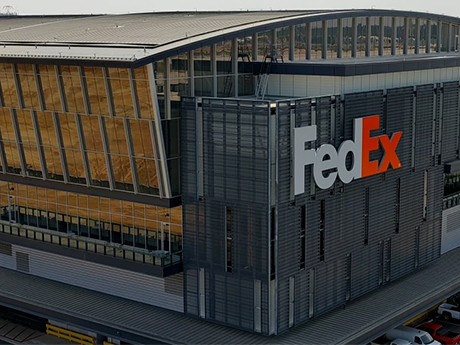The Memphis industrial market stands at a pivotal juncture in mid-2025, navigating temporary headwinds while maintaining the fundamental strengths that have established it as one of the Southeast’s premier logistics hubs.
Despite recent challenges from global trade uncertainties and tariff negotiations impacting project timelines, the market’s long-term outlook remains positive with a foundation built on unparalleled logistics infrastructure and strategic advantages.

Global logistics advantage
Memphis stands as the ultimate global logistics hub, with unrivaled multimodal infrastructure creating competitive advantages few markets can match.
The “FedEx effect” remains one of Memphis’ most significant economic drivers. This powerful multiplier — named for the company’s massive impact on the regional economy — has transformed Memphis into a critical node in global supply chains.
With its World Hub at Memphis International Airport, FedEx connects businesses to hundreds of countries across multiple continents, processing millions of shipments while employing thousands across the region. Recent initiatives, including Network 2.0, One FedEx and the new Automated Sorting Facility at the World Hub, represent strategic investments in efficiency and integration that are likely to boost the Memphis industrial real estate market.

Additionally, Memphis International Airport ranks among the busiest cargo airports in the Western Hemisphere and the second busiest worldwide, handling over 4.4 million metric tons of cargo annually.
Memphis’ logistics infrastructure is further enhanced by five Class I railroads, making it one of only four U.S. cities with such connectivity, providing access to 45 states, Canada and Mexico within just two days. This rail network is further complemented by the Port of Memphis, ranking as the second busiest port on the Mississippi River and the fifth largest inland port in the United States.
Together, these infrastructural advantages position Memphis as a two-day drive to over 75 percent of the U.S. population, with more logistics workers per capita than any other metropolitan area in the country. For companies seeking efficient access to domestic and international markets, Memphis delivers unmatched distribution capabilities that continue driving industrial real estate demand throughout the region.
Current conditions
Leasing activity remains resilient, with the second quarter showing strong performance at 3.2 million square feet. Furthermore, the market’s direct vacancy rate stands at 7.3 percent, with properties under 450,000 square feet performing significantly better than the market average. Little to no sublease space was added to the market in the second quarter, which is a positive indicator in today’s challenging environment.
However, recent tariff uncertainties have caused many projects to be put on pause as companies evaluate their supply chain strategies. Many users are taking a step back from expansion plans and turning to existing space, with manufacturing facilities proceeding with building shells but delaying interior build-outs that require foreign-made components.
Capital perspectives
Capital continues to show strong interest in the Southeast industrial market, with bid sheets for industrial properties in the region outpacing the national average by 1.5 to 2 times.
There’s been a notable “return to term and credit” among investors, with increasing interest in bulk developer-controlled deals. This benefits Memphis, which offers transactions at a lower basis compared to other Southeast hubs that have seen pricing climb.
Memphis also benefits from its proximity to northern Mississippi’s business-friendly environment. Properties there are assessed at only 15 percent (compared to Tennessee’s 40 percent), resulting in significantly lower tax burdens. Additional advantages include potential foreign-trade zone (FTZ) status, freeport warehouse tax abatements and partial property tax abatements, reducing taxes by approximately 35 percent.
Looking ahead
With no speculative industrial deliveries anticipated for the remainder of 2025, vacancy rates in Memphis will likely begin to decline, and rental rates should regain positive momentum by year-end. This supply constraint, coupled with Memphis’ fundamental advantages as a logistics hub, positions the market for a strong rebound once current economic uncertainties subside.
Additionally, as more costly markets such as Atlanta become increasingly expensive, Memphis offers investors the opportunity to achieve higher yields with properties still available below replacement cost. This combination of higher returns and rock-solid logistics infrastructure makes Memphis an increasingly attractive target for institutional investors seeking stable, long-term growth.
As we’ve observed throughout economic cycles, Memphis’ fundamental position as a logistics powerhouse provides resilience that few markets can match, ensuring that when growth returns, Memphis will be ready to capitalize.
— By Jack Wohrman and Jim Freeman, Managing Directors, JLL. This article was originally published in the July 2025 issue of Southeast Real Estate Business.


